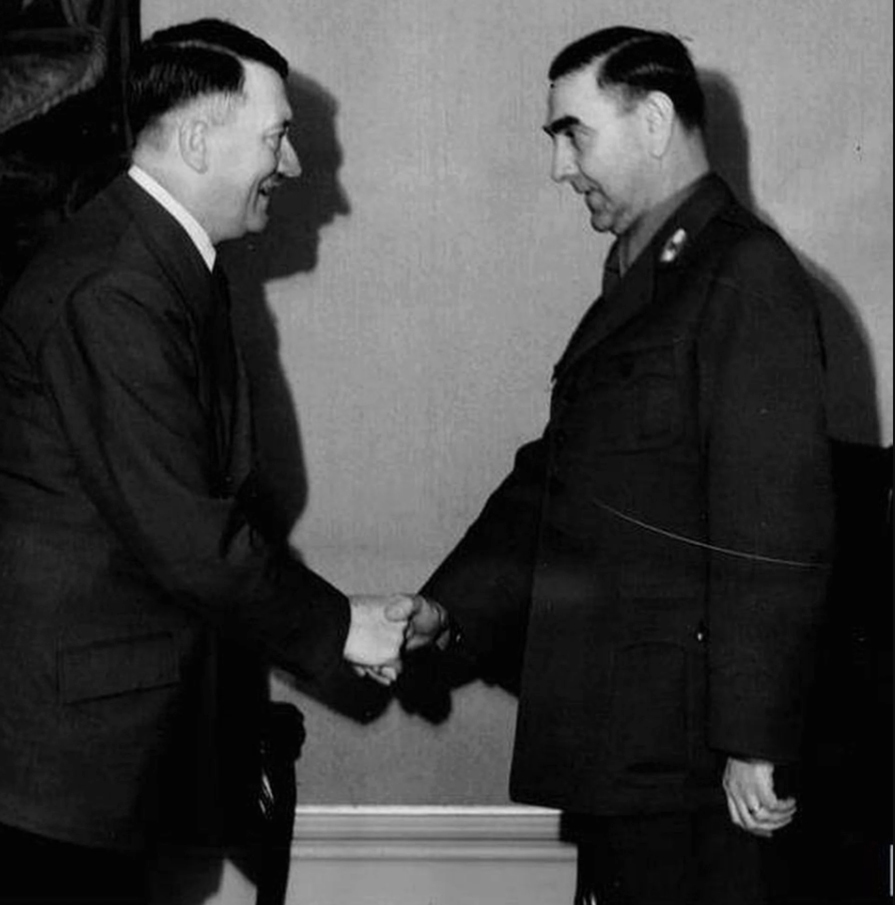



Adolf Hitler and Croat leader Ante Pavelic
By Miloslav Samardzic
The first comprehensive uprisings occurred in the Western Serbian regions in reaction to the horrific and murderous crimes of the Ustashi who seriously concentrated on slaughtering Serbian children immediately after the Axis Powers proclaimed the “Independent State of Croatia” (ISC) in Zagreb on April 10th 1941. These crimes lead to the emergence of Serbian Resistance, organized by pre-war Chetnik committees and the remains of the Yugoslav Army and Gendarmerie.
The Ustashi were so barbaric that Hitler’s envoy in Zagreb, Glaise von Horstenau, once said to Slavko Kvaternik: “Dear Slavko, I’m glad that you will at least leave me alive”. General Turner, Chief of Staff of the German Command of Serbia, sent a report on June 1941, in which the motto was:
“The Serb for him presents a value only when he is dead”.
Irrespective of the ruthlessness in concentration camps in which millions of people were tortured and killed, the Germans themselves, were disgusted by the magnitude of the Croat inhumanity against the Serbs. With this in mind, Hitler requested a report on Croatian leader Ante Pavelic; handling the Croatian case was assigned to General Alexander Lohr, German Commander of Europe Southeast. The report for Hitler had already been prepared on October 1st 1941, but German envoy in Zagreb, Siegfried Kasche, contributed to by removing Lohr’s conclusion that there was a justifiable need to question the existence of the “Independent State of Croatia”.
When Hitler’s special envoy for the Balkans, Dr. Hermann Neubacher, began an intensive inquiry into the inhuman crimes against Serbs, his primary intention was to stop the slaughtering of children and women. In his memoirs, he wrote that the Croatian slaughter of Serbs was “one of the cruelest and despicable actions of mass murder in the whole of World History”. He lived to have heard Ustashi leaders brag “on how they slaughtered a million Serbs, which included babies, children, women and elderly”, but he considered this “boasting exaggeration”. According to the reports he had insight into, Neubacher estimated that 750000 people had been “…slaughtered without defense.”
Italian historian Marco Aurelio Rivelli entitled his book “The Archbishop of Genocide – Archbishop Stepinac, the Vatican and the Ustashi dictatorship in Croatia, 1941-1945”, emphasizing the role of the Catholic Church in these crimes. According to Aurelio, German, Italian and British sources agree that by the end of the war, Croats (accompanied by Muslims from Bosnia and Herzegovina) killed somewhere in between 750000 and 1000000 Serbs, including all the Jews and Roma which were captured.
